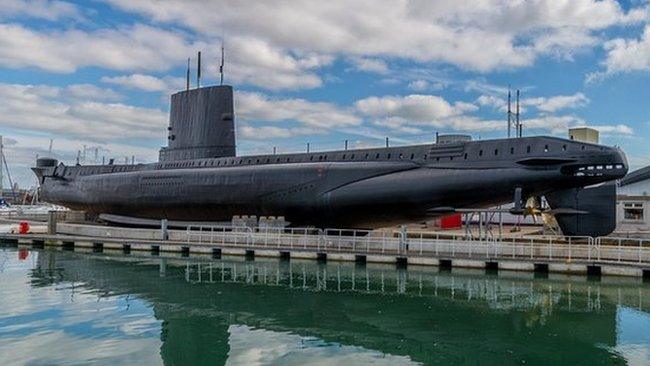Royal Navy's history remembered at Portsmouth museum
- Published
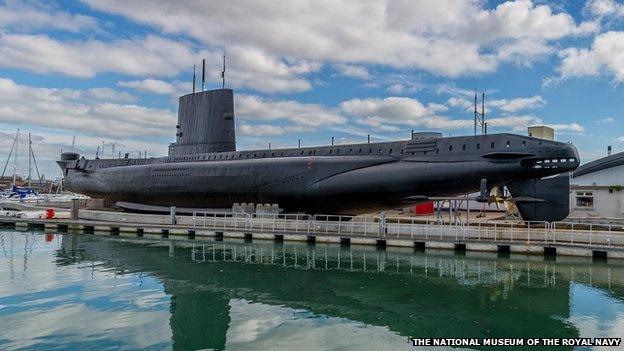
HMS Alliance has been restored partly using Heritage Lottery funding
Tales from the past 100 years of the Royal Navy are being recounted in new exhibitions opening later. Visitors to the £11.5m attractions at the National Museum of the Royal Navy in Portsmouth can tour a World War Two submarine or simply reflect on the human stories behind famous battles.
The Royal Navy and Portsmouth walk hand in hand.
"Portsmouth is here because of the navy," says Dominic Tweddle, the museum's director general. The city's harbour has been in use since Roman times while a dry dock was first created in the 12th Century.
The city's historic dockyard is home to a museum and a set of attractions that explain the debt the nation perhaps owes the navy.
For while Mr Tweddle believes people have "become less conscious of the institution's importance", he says the UK's "whole identity and economy" is built on its role in wartime success and ensuring safe international trade.
This strength, in turn, has been forged on the individuals who have worked in its service.
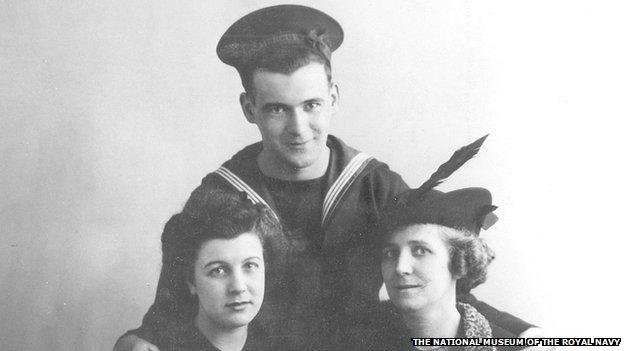
HMS Hood survivor Ted Briggs with his mother and sister in May 1941
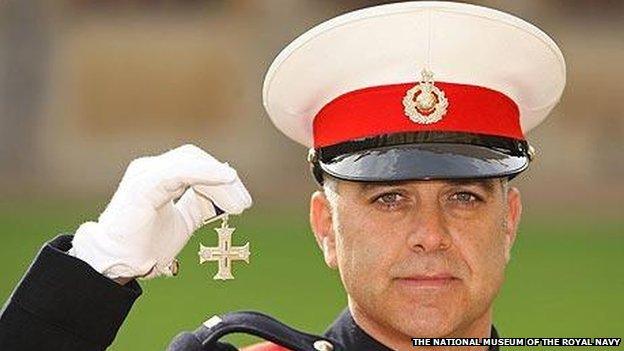
Sgt Noel Connolly came face to face with a suicide bomber
Lt Albert Edward Pryke "Ted" Briggs, of Redcar, Teesside, is among those sailors whose life story and career is featured at the museum.
He was just 18 when he was one of only three people to survive the sinking of HMS Hood in the Battle of the Denmark Strait in 1941 - an encounter which saw 1,415 people killed in the Navy's biggest single loss of life from a ship during WW2.
After his ship was sunk by a German battleship, he spent three hours in the water and almost died from hypothermia before being rescued. He then went on to enjoy a 35-year career, which included service during the D-Day landings and the Suez crisis.
Head curator Matthew Sheldon said: "It wasn't just about this terrible day in 1941 for him because he went on and fought through the rest of the war as well.
"HMS Hood was one of his very first ships so what an incredible thing for an 18-year-old to be in the water and be one of only three men to be pulled out."
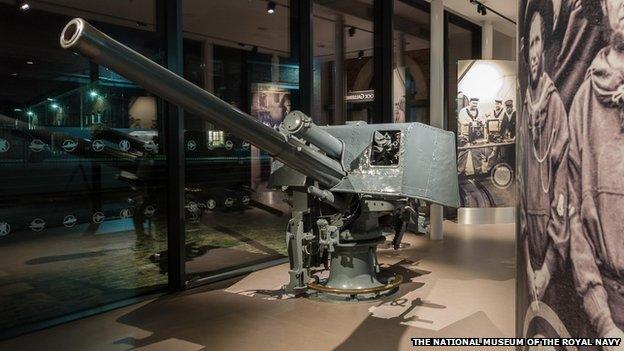
The gun from HMS Lance sank the German minelayer Konigin Luise in August 1914
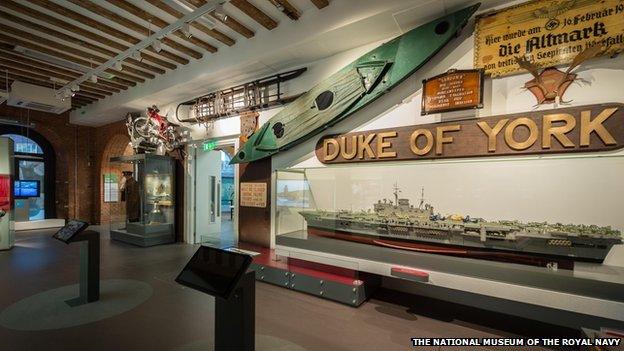
A replica of a cockle canoe used by the Navy during a mission on Bordeaux Harbour in 1942 is on show
The more recent story of Sgt Noel Connolly demonstrates how the navy's heroism is not just confined to the sea.
The Royal Marine, from 42 Commando, rugby tackled a suicide bomber off his motorbike seconds before he could trigger a device in Kandahar, Afghanistan, in 2008.
Sgt Connolly, from Manchester, was 10m away from the teenager when he heard a loud crack and spotted a toggle switch to detonate the explosives. His actions are cited as having saved the lives of 30 men and the motorbike is among the exhibits on show alongside a video of the explosives being stripped from its saddle.
Across the water in Gosport, about £7m has been spent restoring HMS Alliance, Britain's only surviving WW2-era submarine, while a temporary exhibition titled Racing to War charts the Navy's role in the arms race leading up to WW1.
In another nod to the centenary of the conflict, the gun from HMS Lance that fired the first British shot at sea on 5 August, 1914 is among the exhibits in the permanent galleries in Portsmouth.
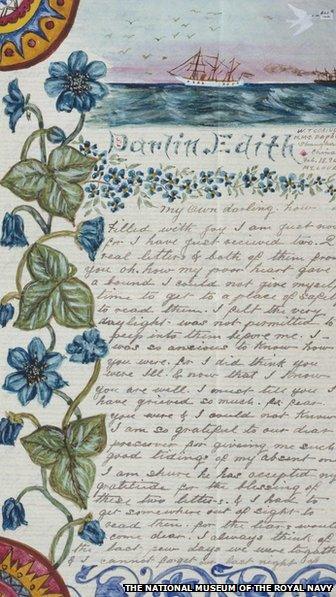
Walter Grainger's letters are among the exhibits on show
HMS Lance and her sister ship Landrail were performing a "sweep" of the North Sea just hours after the outbreak of war when the semi-automatic naval gun fired at a German minelayer off the Dutch coast.
Also on show is a sledge used by the search party sent to find the bodies of explorer Robert Falcon Scott and his team after they went missing on their return from the South Pole.
Mr Sheldon said choosing what artefacts to show had been difficult, but the aim had been to select "unusual stories" or things that would surprise people.
He said: "That might be the Chinese men who were recruited to serve in the navy. Or it might be an artefact that has real drama and pathos to it like the bell that was raised from the wreck of HMS Prince of Wales when it was sunk off Singapore."
The more sensitive side of life at sea is also explored in a collection of illustrated letters written by a chief stoker to his sweetheart.
Walter Grainger wrote hundreds of love letters to Edith, his fiancée, while serving in the Far East.
In one, he wrote: "Each letter I write now is drawing nearer to the last, drawing so close that I can nearly count how many more I shall have to write before I shall have the happiness to see you myself with my own eyes, touch you with my own hand."
Mr Sheldon said the "really beautiful" letters were donated by the couple's surviving daughter.
He added: "Those little letters have travelled across thousands of miles of sea and passed through many pairs of hands to get home. It makes people think."
Among Mr Sheldon's favourite items is the photograph of Lt Briggs with his mother and sister while on survivor's leave after the sinking of HMS Hood.
"That's what the exhibition is about.
"It's about the human face of service in the navy and it's about the impact on families when things go wrong. That's the thing we want people to reflect on when they see the exhibition."
- Published3 April 2014
